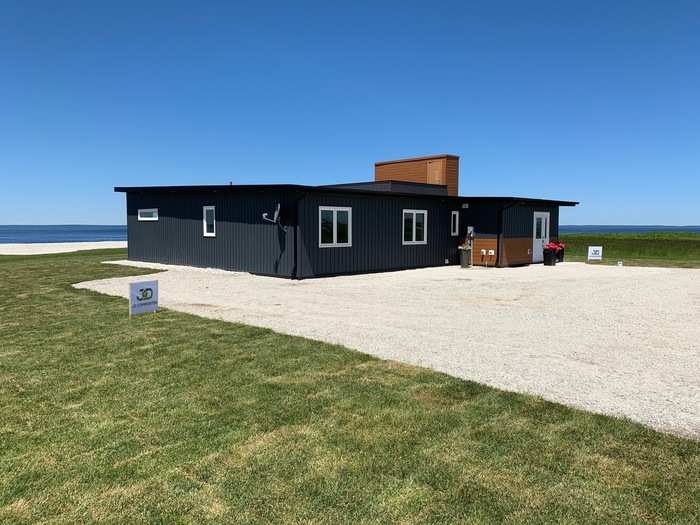
The bottles were shredded, melted, then injected with a gas that turned them into foam. That foam was then molded into 6-inch-thick panels, which formed the walls of the home.

As recycling becomes more expensive for local governments, many cities have resorted to disposing of recyclable goods in landfills. Batches of recycling that carry non-recyclable items like greasy pizza boxes or yogurt cups can also be discarded as trash.

The home contains 170 panels in total, which are bonded together with chemicals instead of traditional nails and shingles, which can come loose during a hurricane.

"We had a lot of learning curves, so profit margins will be minimal," said Joel German, the company's vice president. "But we will gain in knowledge from this first build."
CBC reported that the final cost, including furnishings, was less than $400,000.
"We know where we can cut costs down," said German.

JD Composites tested the panels at a certification facility, where the walls successfully endured 326-mile-an-hour winds. Winds for a Category-5 hurricane start at 157 miles per hour.

The home comes with glazed windows, which the US Federal Emergency Management Agency has described as "very vulnerable to damage from wind forces and windborne debris."
In the event of a hurricane, the consequence of a broken window can be grave: It causes air pressure to rise and the house to blow apart from the inside.
German said the home could be equipped with added hurricane-proof features. Many homes built to withstand a hurricane come outfitted with steel shutters, concrete pilings, hurricane straps, and impact-rated garage doors.

Hurricane Barry marks the first hurricane of 2019. With the Atlantic hurricane season running from June until November, the year's worst storms could be yet to come.
 Markets rebound in early trade on firm global trends
Markets rebound in early trade on firm global trends
 Impact of AI on Music
Impact of AI on Music
 "Cowardly and dastardly act": PM Modi condemns attack on Slovak PM Fico, wishes him a speedy recovery
"Cowardly and dastardly act": PM Modi condemns attack on Slovak PM Fico, wishes him a speedy recovery

Copyright © 2024. Times Internet Limited. All rights reserved.For reprint rights. Times Syndication Service.